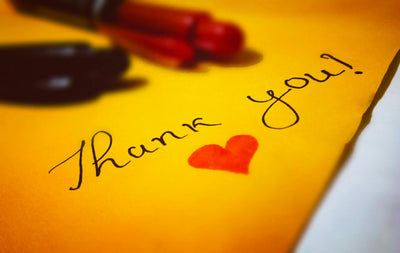← Reviens sur :
Writing is the first step in your development 🧠
Write Without Filter : the key to unleashing your creative mind
One of the biggest illusions when writing is believing that you have to be “perfect” from the first sentence. However, creativity is born precisely from disorder, imperfection, and letting go. Writing without a filter means accepting that the words come out as they come, sometimes chaotic, sometimes clumsy, but always authentic.
Why is it powerful? Because your brain is full of thoughts you never express: snatches of dreams, images, crazy ideas, frustrations , intuitions you judge too quickly. Writing them down without censorship is like opening a dam: suddenly, everything flows. And in this flow, often lie creative nuggets that you would never have seen if you had tried to be “logical” or “beautiful” from the start.
How to Practice Unfiltered Writing
Choose a time to decompress : in the morning when your mind is still fresh, or in the evening to empty everything that has weighed on you during the day.
Set a time limit : 10 to 20 minutes, watch in hand, where you don't lift your pen (or your fingers from the keyboard). Even if you have "nothing to say," write it down: "I have nothing to say, I have nothing to say..." . Quickly, another thought will arise.
Forget the rules : spelling, grammar, structure—nothing matters. The goal isn't to publish, but to unlock your inner flow .
Don't reread immediately : let it rest. When you revisit your pages a few days later, you'll be surprised to see ideas, metaphors, or clues emerge that you hadn't suspected.
The hidden bonus
Writing without a filter isn't just a creative technique: it's also a therapeutic practice. It releases tension, brings clarity to mental chaos, and allows you to reconnect with your intuition. It's a way of saying to yourself, "No matter what others think, I'm letting my inner voice speak." And that's often the first step toward authentic, unique, and, above all, personal creativity.
Using Stimulating Questions: Awakening Hidden Imagination
When you always write the same way, you end up going around in circles in your thoughts. The brain loves habits: it recycles the same ideas, the same memories, the same reasoning. To break this cycle, nothing is more powerful than stimulating questions . They act like mental switches: suddenly, they force you to look from a different angle, to explore areas of your mind that you often leave fallow.
Journaling isn't just about chronicling your day: it's also an opportunity to challenge yourself . Asking open-ended questions is like holding up a different mirror to yourself every morning. You move from a "confirmative" journal (where you write about what's already there) to a creative , prospective journal (where you explore what could be).
Why does it work?
Because questions open doors you would never have otherwise explored. The simple act of asking a question triggers your brain to actively search for answers. Even if you don't have the answer right away, your mind keeps working in the background, like a machine that never stops. As a result, unexpected ideas pop up in the days that follow... in the shower, while walking, or when you least expect them.
Examples of questions to explore
What is the biggest creative challenge I would like to take on?
It forces you to put down in black and white an ambition that you may have kept vague or hidden.
How could I solve a familiar problem in a completely new way?
Ideal for breaking routines and unlocking situations that seemed frozen.
What could I create if I had no limitations of time, money, or skills?
A dizzying question that allows you to touch your purest vision, without restraint or self-censorship.
And if I had to surprise my “future self,” what would I write today?
A fun way to communicate with yourself, but version 2.0.
How to apply it in practice
Each week, choose one or two questions and write freely around them, without looking for the “perfect” answer.
Let yourself drift: sometimes a question will take you to places you never imagined.
Reread your answers after a few days or weeks: you will see patterns appear, recurring desires, avenues for innovation.
Ayoun's Tip: If you want to take this exercise even further, write down all the questions that come to you over time in a dedicated list. Then, when you start journaling, pick one at random. You'll turn your journal into a creative game that will surprise you with each session.Exploring Emotions to Fuel Creation
Behind every great idea, there's almost always an emotion. Joy, anger, fear, excitement... these are powerful fuels that give intensity to what we create. Journaling then becomes a kind of intimate laboratory where your feelings are transformed into creative raw material. When you take the time to put your emotions on paper, you're not just doing a feel-good exercise: you're building a bridge between your inner world and your creative potential.
Why Writing Your Emotions Frees Creativity
Our emotions often contain truths that our minds try to hide. By writing without filter what animates you with radiant joy, nagging frustration, or even subtle nostalgia, you bring to light invisible forces. This is where images, metaphors, the beginnings of stories or projects that you could never have invented in a “rational” way emerge.
An emotional journal is like a raw gold mine: sometimes messy, sometimes heavy, but full of unexpected nuggets. By revisiting what you wrote later in a moment of strong emotion, you'll often discover phrases, ideas, or concepts that you can reuse in your creative or professional life.
How to practice concretely
Choose a specific emotion : instead of writing “I feel bad,” try to dig deeper: is it fear, jealousy, fatigue, or a subtle mix? The more precisely you name it, the more creative avenues you'll unlock.
Describe your feelings as a scene : If your frustration were a landscape, what would it look like? If your enthusiasm were a sound, what noise would it make? This detour through the imagination enriches your writing and trains your mind to think differently.
Transform emotion into creative action : anger can become an idea for a poem or a powerful design, joy can inspire a slogan or a graphic motif, fear can give birth to an innovative project.
The Ayoun touch: audacity and self-mockery
At Ayoun , we believe that emotions should not be repressed but rather sublimated. Laughter in the face of jealousy, boldness in the face of fear, style in the face of bad vibes. This is exactly what our accessories embody: transforming a vibration into a clear message.
The " 5 on your eyes " bucket hat or the " Five in your eyes " white cap aren't just headwear: they're ironic, assertive responses to negative energy. They remind us that even the frustration or jealousy of others can become a creative force . Wearing these pieces is a statement: "I take your vibes, I turn them on their head, and I keep moving forward in style."
In short: exploring your emotions in your journaling is like opening a secret chest. And Ayoun , with its meaningful accessories, invites you to express them with panache, without fear of outside scrutiny. Because deep down, it's our true, raw, vibrant emotions that make us unique creators.Using the "Brain Dump" to Free the Mind
Brain dumping is a technique where you completely empty your mind of all cluttered thoughts, to-dos, or worries by writing them down. This frees up the mental space needed to make room for creativity.
How to: When you're feeling overwhelmed, take a few minutes to write down everything on your mind, in no particular order. This will help you feel lighter and spark new ideas.
Why not do it from a place that inspires you? Wear the white Ayoun visor to experience that sense of clarity and focus, enhanced by the symbolism of the purified gaze.
Keep a Visual Journal
Journaling doesn't have to be just a writing exercise. Incorporating visual elements like drawings, collages, or diagrams can also boost your creativity. This allows you to step outside the confines of language and explore ideas visually.
How to: Add simple drawings, diagrams, or clipped magazine images to illustrate your thoughts or ideas. This can inspire creative solutions you wouldn't have thought of using words alone.
The Ayoun brand encourages this playful and visual approach to take the complexity out of the act of creation, while protecting the creative mind from mental blocks.
Setting Creative Challenges
Using journaling to challenge yourself is an effective way to cultivate creativity. For example, you might decide to create a new idea each day, write a short story, or solve a problem in a unique way.
How to: At the end of each journaling session, set yourself a creative challenge for the next day. It could be writing down a new idea, solving a problem, or finding a new way to approach a familiar task. This keeps you constantly innovating. And if you're on the go, equip yourself with accessories that connect you to your creativity, like the Ayoun dad hat , a classic revisited with a symbolic message.
Using Themes
Each day, choose a specific theme for your journal. This allows you to focus your creativity on a particular area, while exploring different facets of that theme.
Examples of themes:
A day on gratitude
Another day on business ideas
Or even a theme on protection against negative influences, echoing Ayoun 's values
This creates variety in your journaling practice while maintaining a connection between creativity and introspection. And why not embody this theme with an inspiring look, like a rope golf cap or a stylish visor to reinforce the intention?
Take a Step Back and Reread Your Writings
Rereading your old journals can be extremely beneficial for observing the evolution of your thoughts and discovering ideas you had forgotten about. It can also reveal creative patterns or areas in which you particularly excel.
How to: Once a month, take the time to reread your writing. Note down ideas that surprise you, those that deserve to be developed, and those that could be improved. This reinforces the continuity and evolution of your creative process. To accompany these moments of introspection, let yourself be inspired by a black Ayoun cap or a protective bucket hat, which remind you of your commitment to staying aligned and protected.
Conclusion
Journaling is a powerful tool for unlocking and cultivating creativity. Whether exploring your emotions, setting creative challenges, or simply clearing your mind, this regular practice will allow you to access levels of creativity you never imagined possible. Inspired by the Ayoun brand values of protection from negative energy and personal growth, journaling becomes a space of protection and exploration, where creativity can flourish freely.



